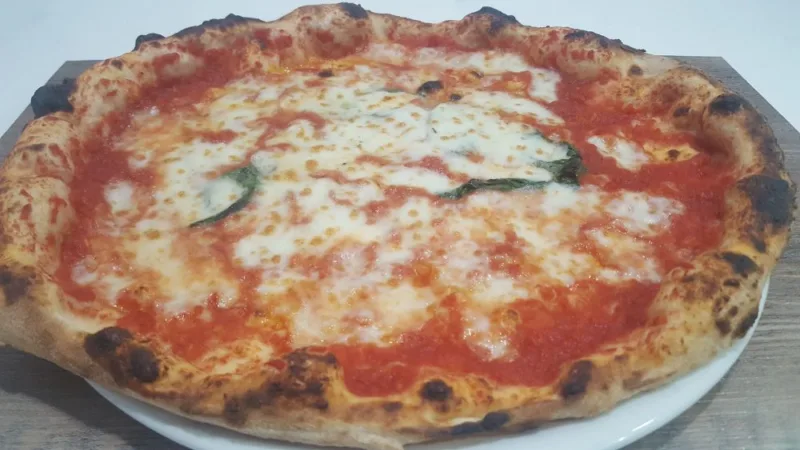Pizza Napoletana
Campania
Tagliatelle al Ragù
Emilia Romagna
Trofie al Pesto
Liguria
Lasagne
Emilia Romagna, Abruzzo, Campania
Tortellini
Emilia Romagna
Handmade pasta shaped like knots are stuffed with pork loin, ham, Mortadella salami, Parmigiano cheese, eggs and nutmeg, and thrown in a thick capon broth.
Spurious legend has it that a voyeuristic innkeeper in Bologna was peeking through a keyhole to spy on Venus, Mars and Bacchus in the middle of a hot and heavy threesome. He caught just a glimpse of the goddess’s perfect belly button and tried to reproduce it in pasta form.
Voila! Tortellino was born.
The original recipe is protected by the Confraternity of Tortellino, die-hard purists who don’t tolerate creative twists.
Many towns in the Emilia Romagna region claim to be the originators of this staple dish, but there’s staunch rivalry between three: Modena, Bologna and Castelfranco Emilia, a small town halfway between them.
Gelato
Italia
This one’s made from dried fish.
No, stay with us! This isn’t the gelatinous reconstituted fish of Scandinavian nightmares, this is a far more delicious proposition.
The secret is in the preparation — a recipe invented by merchants from Vicenza in the 1500s and protected by a brotherhood of chefs. Dried cod is softened by beating and then placed under running water for two days. Then extra virgin olive oil, milk, Parmigiano, onions and anchovies are added and cooked slowly so that the ingredients penetrate into each other.
It’s said that while savoring it, your mouth should feel the living fish still swimming in the ocean, a scenario which, we admit, is slightly nightmarish.
Polenta
Italia
Carciofo alla Giudia
Lazio
This fried, crispy golden globe artichoke, which makes a crunchy sound with each bite, is a delicacy of Rome’s Jewish ghetto.
The criteria for selection is strict. Only the best variety are chosen. They’re 15 centimeters wide, twice the normal size, and grow on the uppermost part of the plant that’s absorbed the most sunlight.
Once the rough leaves are delicately trimmed with a cobbler’s knife, the artichoke is dipped twice in frying oil at different temperatures. Served as an appetizer, sometimes upside down with the stem in the air, overspilling the plate like a blooming flower.
Cjarsòns
Friuli Venezia Giulia
Risotto alla Milanese
Lombardia
Porceddu
Sardegna
Bombolotti all’Amatriciana
Lazio
Caponata
Sicilia
Tiramisù
Veneto-Italia
Insalata Caprese
Campania
Bollito alla Piemontese
Piemonte
Meat addicts will love this dish originating from the northern region of Piedmont. Bollito simply means “the boil” and is a feast of various meats. One single dish holds boiled pieces of seven different beef cuts plus parts of other animals: calf’s head, chuck steak, ox tongue, ox tail, flank; one whole capon and one cotechino pork rind sausage.
Carrots, onions, fresh rosemary, celery, garlic, salt and pepper are added to spice up this butcher’s platter. The meat can then be dipped in a variety of bittersweet sauces.
The trick is all in the timing and temperature. The longer the meats are boiled, the tastier they get but there’s a risk of destroying the flavor through overboiling.
Linguine allo Scoglio
Campania
Parmigiana
Campania, Sicilia
Coda alla Vaccinara
Lazio
Vitello Tonnato
Piemonte
Italians don’t usually like to mix meat and fish, but there are a few exceptions. One is Vitello Tonnato, aka veal covered in tuna cream.
This unusual concoction sees boiled veal fillets sliced into circles and covered in a dense layer of mayonnaise mixed with shredded tuna, anchovies and capers. The concoction is typically served cold as an appetizer.
It’s a specialty of the Piedmont region, which bears the influence of past French conquerors.
Malloreddus alla Campidanese
Sardegna
Tonnarelli Cacio e Pepe
Lazio
Sfogliatella
Campania
Culurgiones
Sardegna
Agnolotti del Plin
Piemonte
Risotto al Gorgonzola
Lombardia, Piemonte
Timballo
Abruzzo, Campania, Sicilia
Dai un'occhiata anche a:
- Il Turno di Domani – Uvenude e il talento di Gianluca Grenci
- A Brescia la mozzarella al ristorante si fa al momento
- Week End. Il Vallo di Diano fra Certosa, grotte di Pertosa e prodotti straordinari
- Elisa ed Ernesto, la coppia dell’estate che scoppia di felicità
- Piadina: viaggio nella Romagna che lievita tra impasti e tradizioni
- Tre cose da fare a Napoli che i turisti non conoscono
- Al Grand Hotel Parker’s di Napoli lo spettacolo raddoppia: arte visiva e gastronomica coesistono nel nome di Parthenope
- Pantruscone: un lievitato ambasciatore della Tuscia
